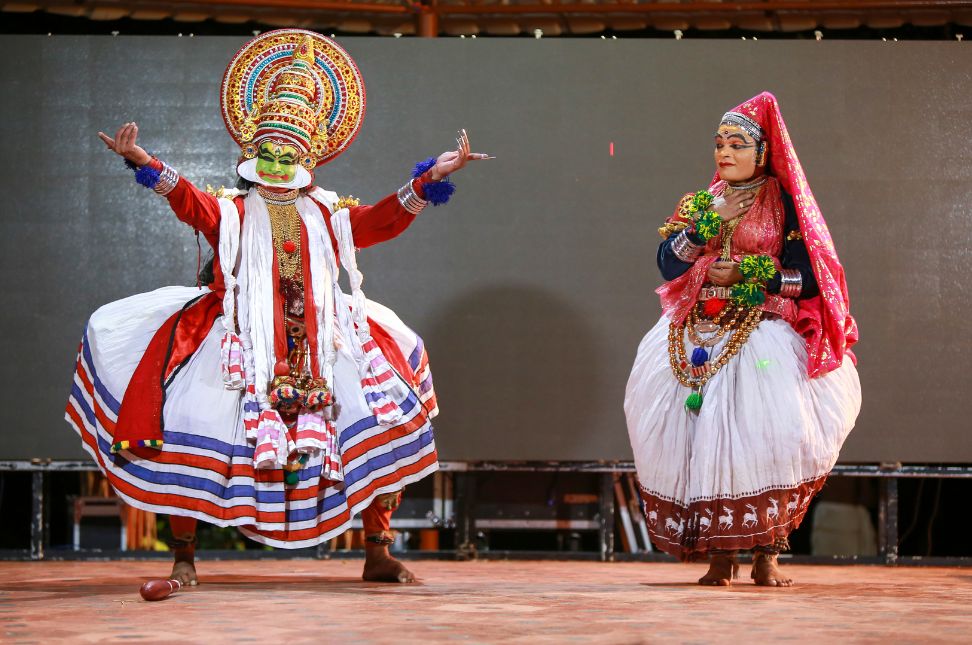Kerala, a picturesque state in southern India, is renowned for its rich cultural heritage and vibrant folklore. Kerala folk tales are an integral part of this heritage, offering a glimpse into the region’s history, beliefs, and traditions. These tales, passed down through generations, reflect the wisdom, values, and creativity of the people of Kerala. In this article, we will delve into some of the most captivating Kerala folk tales, exploring their themes and significance.
The Origin of Kerala Folk Tales
Kerala folk tales have been preserved through oral traditions for centuries. These stories were originally narrated by village elders, bards, and traveling storytellers. With time, they became an essential part of festivals, rituals, and communal gatherings. The advent of written literature helped in documenting these tales, ensuring their survival for future generations.
The Enchanting Tale of Parayi Petta Panthirukulam
One of the most famous Kerala folk tales is the story of Parayi Petta Panthirukulam. This tale revolves around a woman named Parayi and her twelve children, each of whom went on to achieve greatness in different fields. Despite being born to a low-caste woman, the children defied societal norms and proved their worth. This story highlights themes of resilience, destiny, and the triumph of human spirit over adversity.
The Legend of Naranath Bhranthan
Another popular story in Kerala folk tales is that of Naranath Bhranthan, a wise but eccentric sage. Known for his peculiar behavior, Naranath Bhranthan was often misunderstood by the people around him. He would roll a boulder up a hill every day, only to let it roll down again. Through his actions, he imparted profound philosophical lessons about the futility of human endeavors and the importance of inner peace. This tale is a reflection on the human condition and the search for meaning in life.
The Magical Fish of Vypin
Kerala folk tales are replete with stories of magic and mystery. One such tale is that of the magical fish of Vypin. According to the legend, a fisherman from Vypin once caught a fish that could speak. The fish warned him of an impending storm, allowing the fisherman to save his village. This story underscores the connection between humans and nature, and the belief in supernatural beings that protect the community.
The Benevolent Spirit of Kuttichathan
The story of Kuttichathan, a benevolent spirit, is another fascinating tale from Kerala folk tales. Kuttichathan is believed to be a mischievous yet helpful spirit who assists those in need. He is often depicted as a small boy with magical powers. This tale highlights the duality of good and evil, and the belief in supernatural forces that influence human lives.
The Fabled Snake Grove
The legend of the Snake Grove is a prominent theme in Kerala folk tales. According to this story, there was a sacred grove where snakes were worshipped as deities. The grove was believed to bring prosperity and protection to the village. However, when the grove was destroyed, misfortune befell the villagers. This tale reflects the reverence for nature and the belief in its divine powers.

Themes and Significance of Kerala Folk Tales
Kerala folk tales encompass a wide range of themes, from heroism and morality to magic and the supernatural. They serve as a means of imparting moral values, preserving historical events, and explaining natural phenomena. These tales often reflect the socio-cultural context of Kerala, addressing issues such as caste, gender, and human relationships.
The significance of Kerala folk tales lies in their ability to connect the past with the present. They offer insights into the collective consciousness of the people of Kerala, showcasing their beliefs, aspirations, and struggles. These stories also provide a sense of identity and continuity, reinforcing cultural bonds within the community.
Preservation and Adaptation of Kerala Folk Tales
In today’s digital age, the preservation of Kerala folk tales faces new challenges and opportunities. While the oral tradition continues to thrive in rural areas, modern technology has enabled the documentation and dissemination of these tales to a global audience. Initiatives such as digital archives, online storytelling platforms, and cultural festivals play a crucial role in preserving and promoting Kerala folk tales.
Adapting these tales for contemporary audiences involves striking a balance between authenticity and innovation. Folktales are being reimagined in various forms, including literature, theater, films, and animation. These adaptations ensure that the essence of the stories is retained while making them accessible and relevant to younger generations.
Conclusion
In conclusion, Kerala folk tales are a treasure trove of wisdom, creativity, and cultural heritage. These stories, steeped in the traditions of Kerala, offer timeless lessons and profound insights into the human experience. By exploring and preserving these tales, we celebrate the rich cultural tapestry of Kerala and ensure that its legacy continues to inspire and enlighten future generations. As we delve into the enchanting world of Kerala folk tales, we embark on a journey of discovery, connecting with the heart and soul of this beautiful land.




